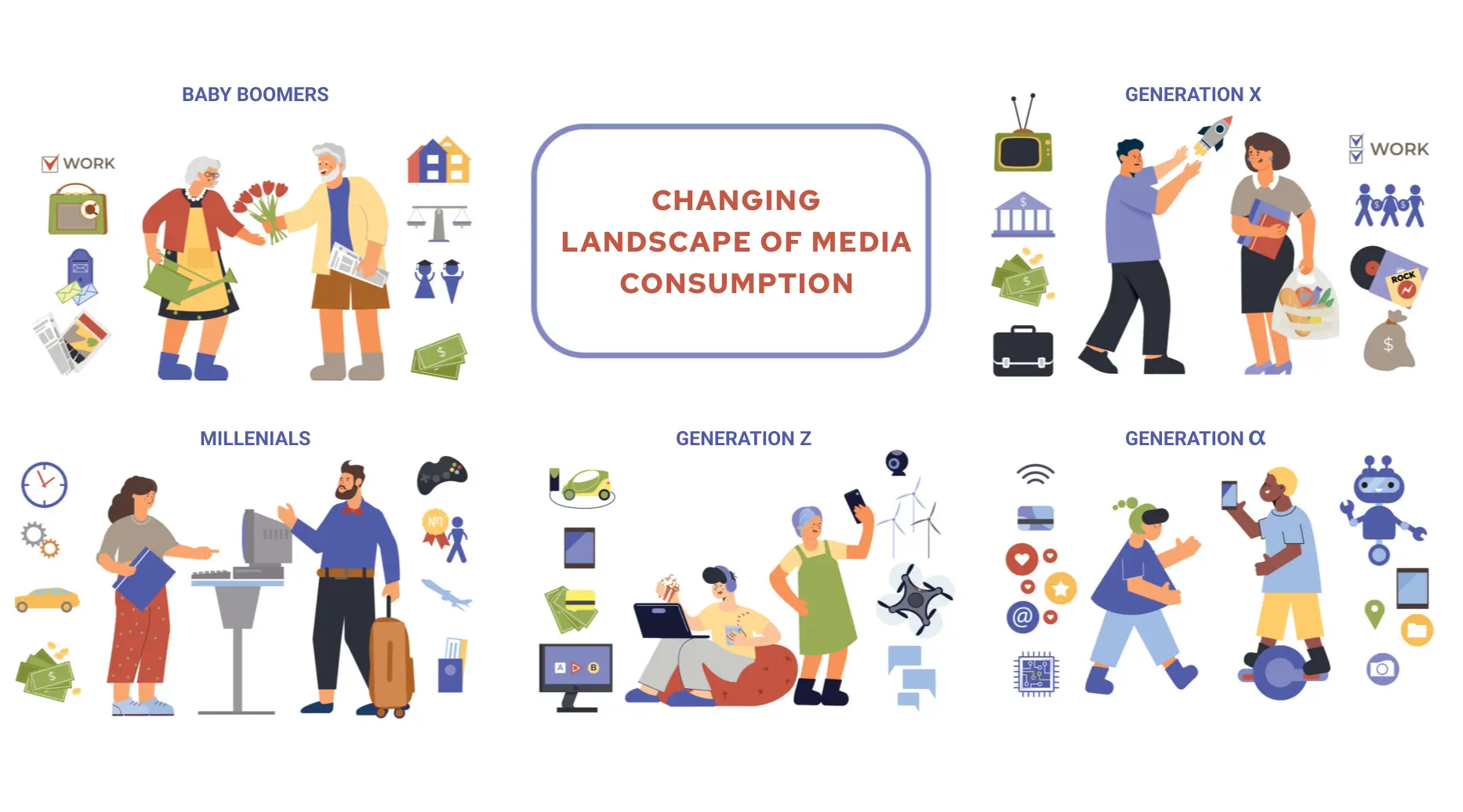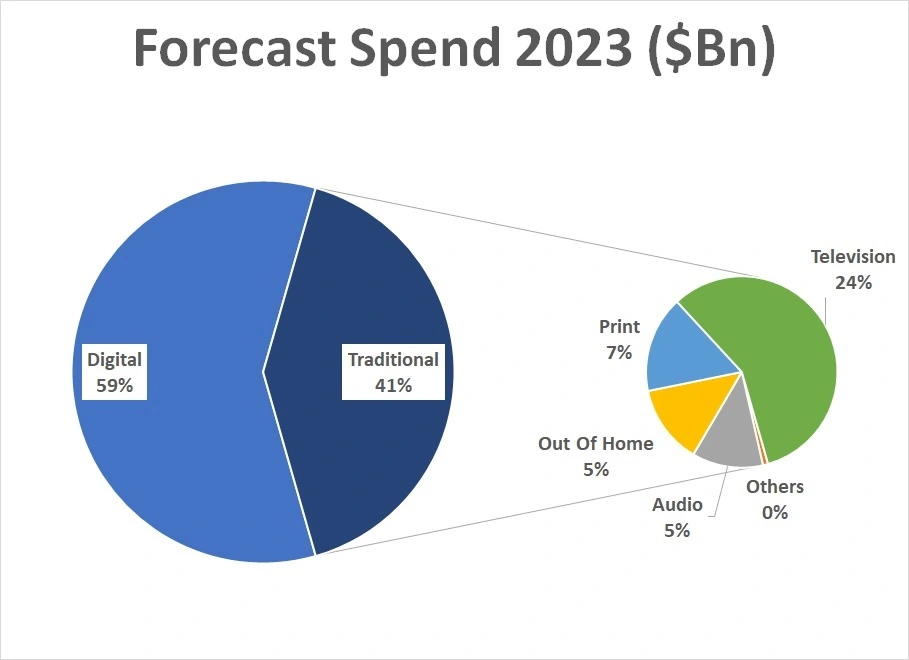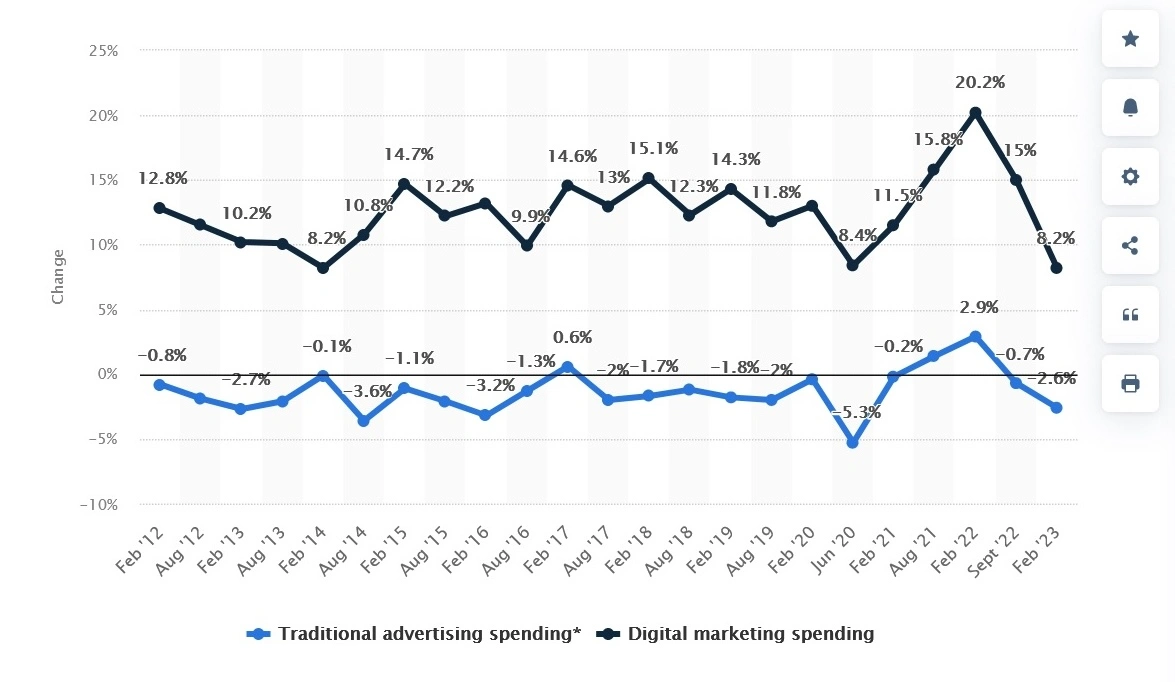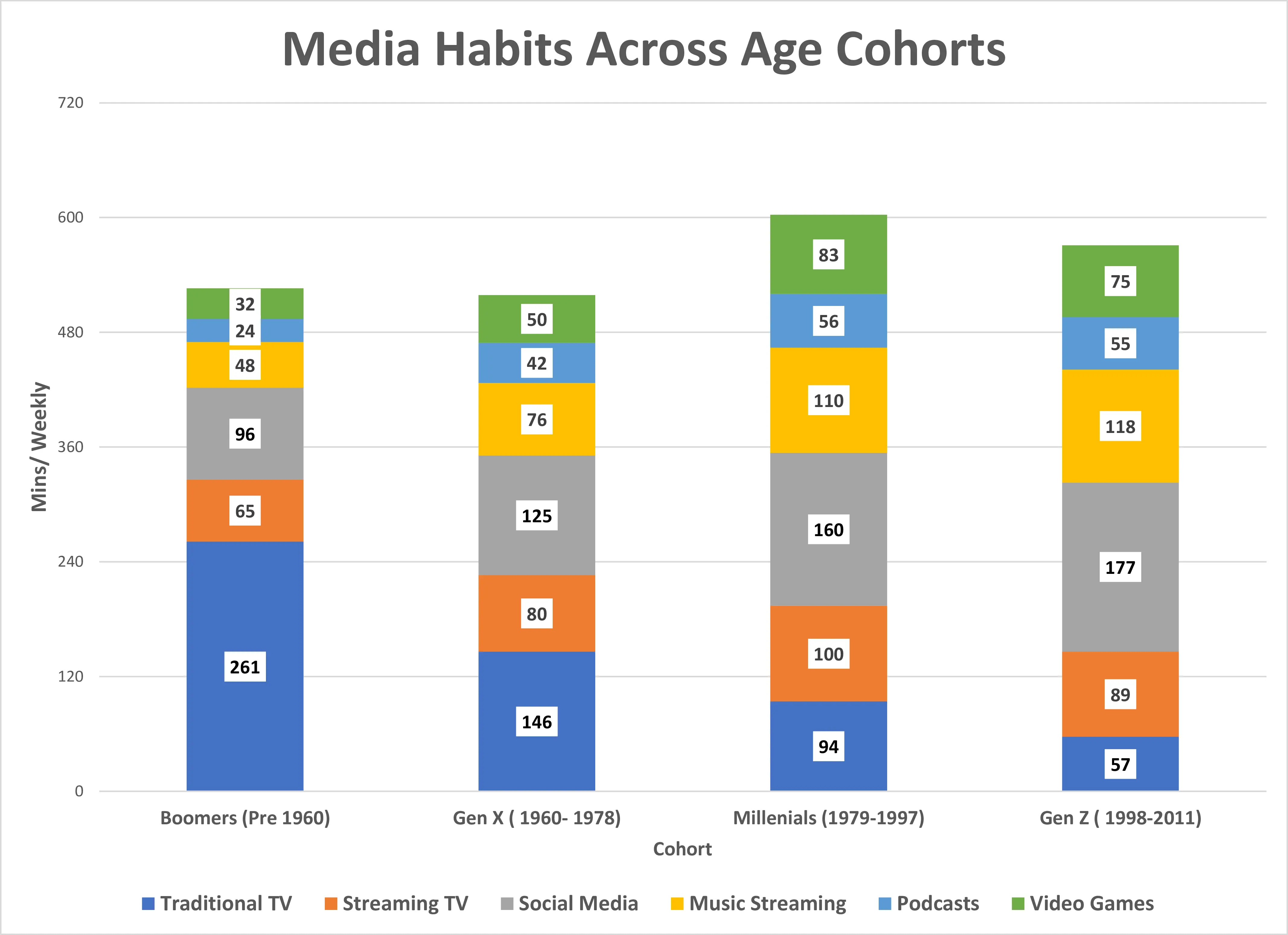Shifting Landscape- State of Marketing Spends Globally.


Table Of Contents
- Executive Summary (TL; DR)
- Marketing Spend- Traditional vs Digital.
- Demographic Differences- How Different Generations consume media.
- One last caveat- Privacy
- Conclusion
- Read Also
Executive Summary (TL; DR)
In our last article, we delved into the rising importance of Marketing ROI and the increasing focus of firms on traceable and efficient Lead Generation activities. In this short article, we will take a quick look at how the advertising landscape has changed and the different media habits of consumer cohorts and the applicability across industries. Follow up articles in this series will look at how we can implement a data driven approach to Search Engine Marketing (both Organic-SEO and Paid Marketing across Google, Bing, Yahoo, Yandex, Baidu, etc), different Social platforms (FB, IG, Tiktok, LinkedIn, Snapchat, Twitter, etc)- exploring in-depth content, different CTA’s possible, and how to unify them for ease of granular tracking in a single CRM system. Before we start on our journey, a caveat. This series is not going to show you how to create content, do SEO or create the best Ads. That is too wide a scope. The focus of this series will be to familiarize you with what is available in the market today, different ad formats, and how best to track Leads generated from these assets to fine tune your Marketing ROI.
Marketing Spend- Traditional vs Digital.
Partly driven by our changing lifestyle and partly driven by businesses keen to track how their Marketing is directly leading to Lead Generation, the last few years have seen a sea change in spending Marketing Spend habits globally. As per a report by Dentsu from May 2023 on global Ad Spends, today firms are spending close to 2/3rd of their budgets online. Along with fragmentation of media, this shifting allocation is raising challenges for Marketing teams.
 source:
https://www2.deloitte.com/xe/en/insights/industry/technology/media-industry-trends-2023.html
source:
https://www2.deloitte.com/xe/en/insights/industry/technology/media-industry-trends-2023.html
It is estimated that this trend will continue with Digital increasing it’s share by about 1% per annum going forward.
With burgeoning digital Ad Spends across platforms, many of which are not easily understood by senior decision makers, has come the demand for accountability. Fortunately for us, digital platforms are much more amenable to tracking than traditional media.
Demographic Differences- How Different Generations consume media.
Just because globally digital Ad Spends are increasing does not mean that every firm needs to focus solely on Digital. Different age cohorts consume media differently.
A recent compilation of data by The Drum has shown that Marketers need to catch up. The attitudes and preferences of different generations towards different media is very different. Sticking to old habits, using outdated media mixes will ensure wastage of Marketing Budgets.
Ultimately, the choice of which media to use will depend on your target group of buyers and their influencers.
One last caveat- Privacy
Before we head into discussing different platforms and how we can track lead conversion, a word of caution on the impact of legislation around the world covering what consumer data advertisers can use or store. It is worth caring about because even at it’s lowest level Europe’s General Data Protection Regulation (GDPR) can place a penalty on a firm of up to EUR 10 million. Certainly not a trivial matter. Since privacy legislation varies by region and country it would be wise to check out the legislation in your operating geography. Should you be operating across multiple geographies it would always be better to comply with the stricter regulations. You can use the below table for a starting point:
| Country/Region | Legislation | Sitelink |
|---|---|---|
| United States | Various sectoral laws apply (e.g., COPPA, HIPAA) | U.S. Federal Laws |
| California, US | California Consumer Privacy Act (CCPA) | California Legislative Information |
| UAE | Federal Decree-Law No. 5/2020 on Data Protection | UAE Government Portal |
| India | Personal Data Protection Bill (PDPB) | Ministry of Information & Technology |
| Singapore | Personal Data Protection Act (PDPA) | PDPC Singapore |
| Japan | Act on Protection of Personal Information (APPI) | e-Gov Japan |
| South Korea | Personal Information Protection Act (PIPA) | KLRI |
| United Kingdom | Data Protection Act 2018 (DPA 2018) | Legislation.gov.uk |
| Brazil | Lei Geral de Proteção de Dados (LGPD) | Official Brazilian Government Site |
But the gist of all the laws is to ensure that advertising is transparent, truthful and accurate, have opt-out clauses (for targeted advertising/ remarketing) among others. As pertaining to lead generation, advertisers should ensure that they have opt-in/ opt-out clauses to target consumers with advertising and should focus on capturing and securing only the minimal amount of data necessary. Best practice is that every time data is captured for lead generation, consumers should be informed about how you intend to use the data. Compliance to these laws should not be only for legal reasons but from ethical point also.
So, where does that leave us?
Conclusion
The Marketers life has become much more complex with the rise in digital vs traditional forms of Marketing coupled with increased demands for accountability from Senior Management. While earlier generations only had to contend with OOH, Radio, Print, Events and TV, the changing media habits of consumers have introduced a plethora of new platforms- Social Media, Streaming Music, Streaming TV, Podcasts, Games and even newer forms of media like AR and VR. Being able to streamline Lead Generation, improve Marketing ROI and collaborate with Sales to generate revenue, all at the same time as run Marketing efficiently raises the need for an Omnichannel approach to Lead Generation and Tracking.
In the next article in the series on Marketing ROI, we will take a closer look at Search Engines- Google Is Not the Only Game In Town before we move on into exploring Organic and Paid Search Marketing assets.
Read Also
This blog is the third in the series on Lead Management. Dive deep and check out our other blogs:
Subscribe To Our Blogs
Get the latest blog notification into your email.


